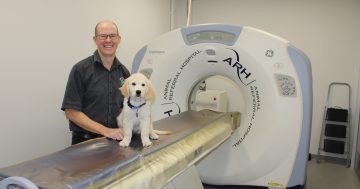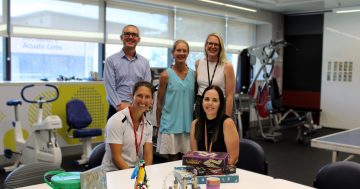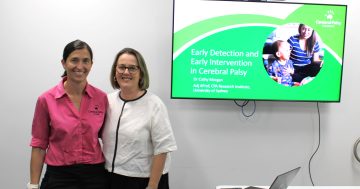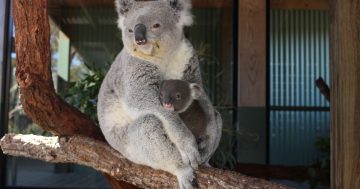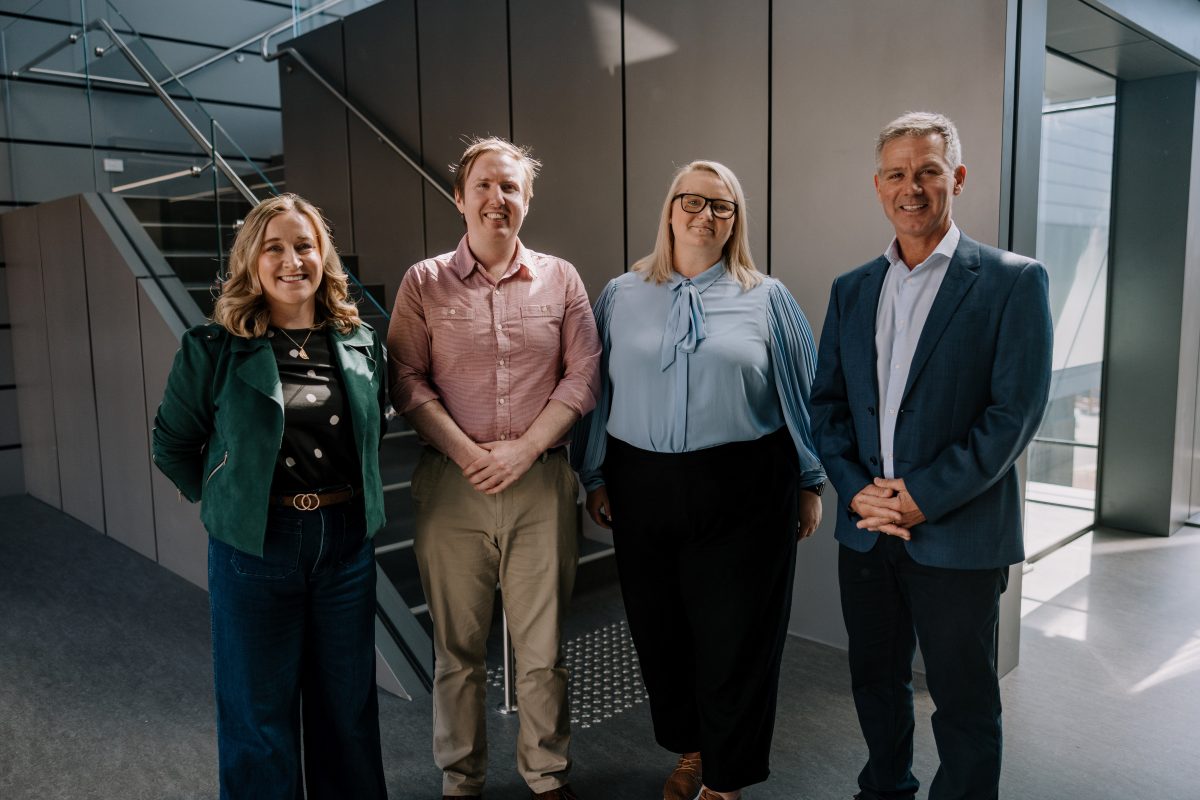
FightMND’s Dr Bec Sheean with grant recipients Dr Luke McAlary and Dr Dezerae Cox, and FightMND CEO Matt Tilley. Photos: Michael Gray.
Researchers from the University of Wollongong will continue the legacy of late molecular biologist Professor Justin Yerbury by embarking on two new projects to better understand and treat motor neurone disease (MND), after receiving vital funds to conduct the work.
More than a million dollars from not-for-profit organisation FightMND has been awarded to Illawarra research teams investigating the cause of MND and creating ways to identify, track progression and treat the disease more effectively.
Dr Luke McAlary said trying to understand MND was like coming into a crime scene and seeing everything that had happened but not yet knowing how.
“So right now we know that a particular gene and protein called TDP43 is a prime suspect but we don’t know how and why so that’s what we’re working on,” Dr McAlary said.
“We’re going to figure out what happened to make TDP the prime suspect and to do that we’re going to look at every single gene that a human carries and how it talks to the TDP gene, we’re going to look at what mutations in the TDP gene do and we’re going to look at how chemicals affect TDP as well.”
He said there was currently not enough understanding about many neurological diseases, with research being even more complex to assess in living patients due to it involving the brain and spinal cord.
“By obtaining a greater understanding we can start to more accurately experiment in our labs how these diseases work and by more accurate experimentation we can really tease out how we can treat it in a more effective manner than we currently do,” Dr McAlary said.
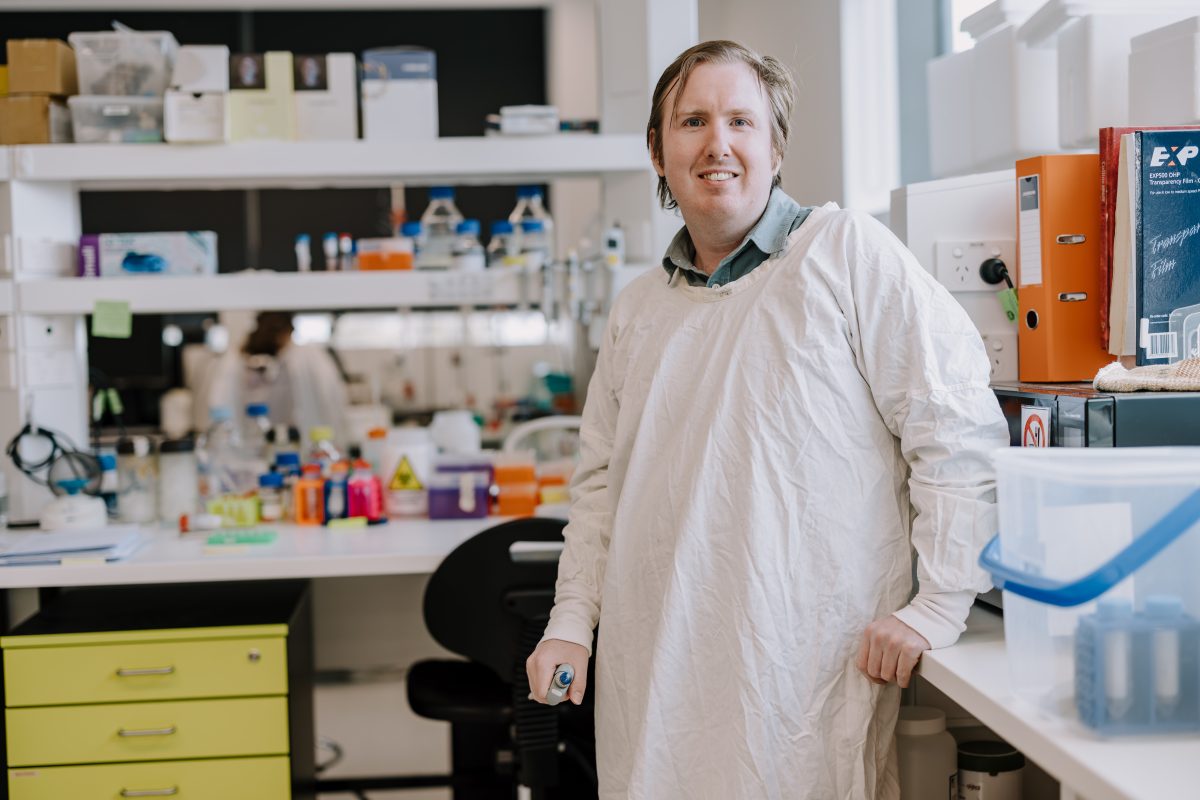
Dr Luke McAlary is leading a team to better understand the impact of a key protein.
Despite its complexity, Dr McAlary and many of his team are driven by the determination to carry on the work of his friend and colleague of more than a decade Professor Justin Yerbury, who lost his own battle with MND in 2023 after dedicating so much of his life into research into the area.
“I guess the feeling here is what he imparted on me before he passed away, unspoken, is just that no one else is going to do it, you have to pick up the ball and you have to run with it,” Dr McAlary said.
“This is a battle that a lot of people in our lab and a lot of our close colleagues have chosen because they’ve seen Justin and his passion, drive and fortitude.
“Not even just from me, but from everyone I know here, a lot of what we do is because of him and we can’t let his time and effort disappear.”
But to advance research in this area and create real results for patients it will take all hands on deck, with another project also to be launched at UOW, which will create ultrasensitive tools to detect, measure and characterise the individual molecules which cause the death of the cells in the brain that help our muscles move.
“They are a direct measure of disease progression as opposed to what we currently have which relies on physical symptoms and some indirect molecular markers,” senior research fellow Dr Dezerae Cox said.
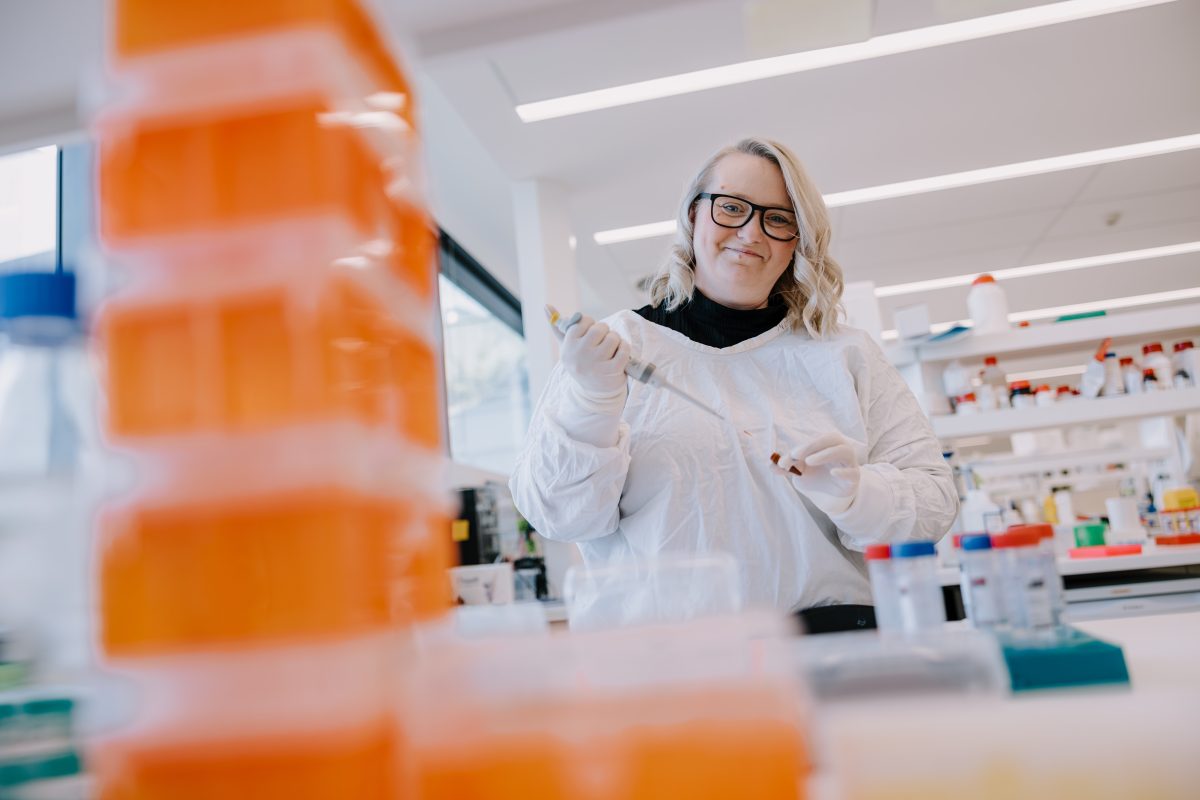
Dr Dezerae Cox’s project could more accurately detect and measure the progression of the disease.
“The tools that we’re developing are all about merging what we know about some of the causes of MND with the new treatments that are emerging and bridging that gap to allow us to measure both how effective the treatments are and then hopefully eventually being able to diagnose much earlier as well.
“So by the time someone presents with physical symptoms in the clinic often they’ve had decades of neuron loss by that time and so these tools are really effective hopefully at the earlier stages of the disease as well.”
These projects are just small pieces in the puzzle but are vital in working towards treatment and a cure for those impacted by the disease.
The work has only been made possible through funding by FightMND which has awarded more than $22 million this year to fund research across the country and tackle the disease from all sides.
“People with MND can present in very different ways, so you can have different sites of onset, different rates of progression, different ages of onset,” FightMND Director of Cure Research and Programs Dr Bec Sheean said.
“I think it’s probably like the cancer field 40 years ago when we used to say people had cancer and now we realise there’s lots of different subtypes of cancer; the problem is that if we give everybody with MND the same treatment it’s probably not going to work – we need to get the right treatment to the right person.”
She said Australia was becoming a world leader in the field and was able to attract international experts and clinical trial opportunities for Australians diagnosed with the disease.
“What we’ve seen in the past 10 years is this huge momentum – we were walking towards progress, where now we’re running and sprinting, and it’s that funding that’s coming in year after year that’s driving that forward,” Dr Sheean said.
“It’s really those everyday Australians who are donating or buying a beanie or tipping a bucket of ice water over their head, they’re actually the ones that are fuelling this research progress, it just wouldn’t be possible without that support.”
To find out more or donate to the cause visit the FightMND website.









